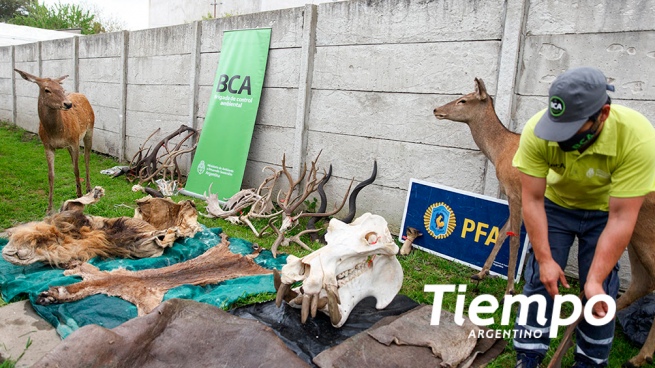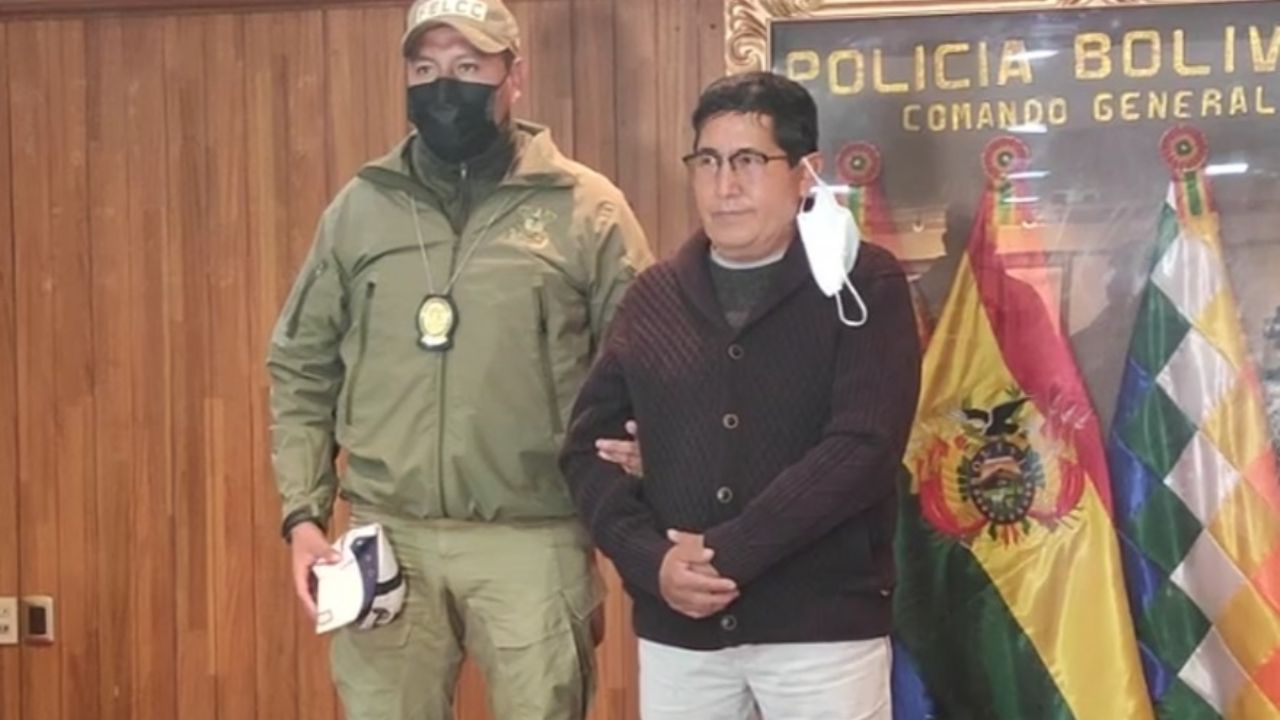From a bear that lives in a home after the traveling circus left it abandoned years ago, to a criminal organization with international reach that sells thousands and thousands of bird or turtle eggs. Such is the complexity of a problem that includes the most diverse situations and that is expanding: the illegal trafficking of wildlife. The range includes live animals that urgently need to be rescued, as well as the sale of pieces of animal origin, skins and taxidermy. In the midst of an immense spectrum and with little official statistical information, in the last year alone the Environmental Control Brigade (BCA), which was created in September 2020 and reports to the Ministry of the Environment, made 928 seizures of live animals, products and wildlife by-products. What happens to those specimens? Who sold and bought them? A universe about which little is known, despite being in sight and moving millionaire figures.
The most trafficked native species, according to data from the BCA, are reptiles such as tortoises and small birds such as red-crested cardinals, yellow cardinals, goldfinches, queen blackberries, bow ties, parrots and macaws. Among the most illegally traded exotic species were brown bears, other birds and big cats such as tigers. Border areas and large cities emerge as the most problematic sites. Last month, during a road check on the way to Rosario, Gendarmerie troops rescued 154 talking parrots that were being transported in wooden boxes wrapped in canvas, hidden in the passenger compartment of the spare wheel, under the driver’s seat.
Law 22,421 on the Conservation of Fauna, which points to the “legal system that tends to solve the problems derived from the predation suffered by wildlife” was sanctioned in 1981, during the last civic-military dictatorship. “It is a law that is 41 years old. And the issue was never on the political agenda. They are working on an animal welfare law, and among other things they are thinking about increasing penalties, but it has to be something articulated with the jurisdictions. It is not easy, there are economies that practically live on this”, Alejandro Mackielo, director of Inspections and head of the BCA, remarks to Tiempo.
On routes and networks
The illegal sale of wild animals is often in plain view, in markets, fairs or roadside stalls. The Brigade “performs patrolling in open networks in order to capture the demand for fauna and thus be able to detect traffickers, in addition to being part of international actions with Customs and Interpol. Likewise, it works in collaboration with the Public Prosecutor’s Office and with the police forces of the whole country”. The intervention is carried out directly, through administrative actions, or after making the judicial complaint to, for example, obtain search warrants.
“Although trafficking has been prohibited for years, it was never of much importance. We have sent notes to Mercado Libre saying ‘you are selling hats with jaguar skin’. Sometimes it is enough to look at social networks. Those publications were downloaded and the data was requested”, reveals Mackielo. And he adds: “Although the law contemplates everything, the intention is to focus on live animals.”
The rescued specimens can be native or exotic. In the first case they try to reinsert them into their habitat, if they are in a position to do so. Exotic animals, on the other hand, can only be taken to sanctuaries or conservation spaces, without a free possibility of reintegration.
“Recently two little felled monkeys were rescued in Temperley. They tell us they are 30 years old. You can no longer release them, they don’t recognize predators, they don’t know how to eat by hunting. There you have to work so that they are not overcrowded in a room and take them to a place with appropriate enclosures. The same with birds whose wing cartilages are cut so they don’t escape. It’s very common. We have found macaws, toucans, talking parrots that, when they are small, their wings are cut and they do not fly anymore”.

Organized crime
“I started working with this in ’83. I have reports from ’87. It is a chronic issue”, emphasizes the naturalist and scientific adviser of the Azara Foundation, Claudio Bertonatti. “If I have to make a diagnosis, the same aspects have been repeated for years: the most serious thing is that there is no political vocation to confront what we call organized crime,” he accuses.
Bertonatti argues that the approach to trafficking in species “should fit within organized crime with all its diversity of variants” and that, unlike other types of trafficking, in this case “there is an absolute underestimation of the value of what is at stake ”. The illegal wildlife trade market generates between 15 and 20 billion dollars a year, according to estimates. According to information released by the Ministry of Environment and Sustainable Development, it is the fourth largest illegal trade in the world after the sale of drugs, counterfeiting and human trafficking.
Bertonatti mentions fishing as an «eloquent example» in the trade of species: «Everyone knows that there is a fleet from different countries in Mile 201. When the controls move away, they advance in Argentine waters. And several times they have seized illegal ships. But the fishing entrepreneurs abandon those boats. The business is so profitable that it is within the costs».
Despite being visible, it is a poorly quantified problem in official terms. For this reason, Bertonatti works on the preparation of statistical reports based on media publications. According to the survey published in the Neotropical Biodiversity bulletin of the Azara Foundation, this search resulted in 163 operations in 19 provinces throughout the year 2020. In these procedures, 6,080 specimens and 2,820 kilograms of meat related to wildlife were seized. They involved 4688 live animals.
The NGO Aves Argentinas also appealed for its own surveys in the absence of official statistics, through the Illegal Wildlife Trafficking Program. Facebook posts followed. Between January 2020 and August 2021, they surveyed 50 groups and pages for the sale of animals. They detected 1,429 records of the sale of wild animals from a total of 1,006 posts offered by 581 users.
“We always notice that there are no statistics, neither provincial nor national. We began to see what was happening, the important thing about having the data is to be able to act accordingly afterwards. Know where the animals come from, at what time, what species are being trafficked. The idea was to show people what is happening and see if we can raise it in front of Facebook to study if something can be done about it, because it is a platform that is allowing this to happen”, denounces Cecilia Maqueda, coordinator of the program.
Maqueda warns about what is happening on the networks, something enhanced by the pandemic: “There are still fairs, but with everything that technology has advanced, networks are used a lot. Facebook is the one with the most amount. And there are many WhatsApp groups where it is more difficult to enter. There are from small collectors who like birds to people who collect and take in quantity. We have to go against these big associations, we always insist on that”. «
pet alert
Although the specialists point out that the controls focus on the large traffickers of animals and parts, they also stress the need to raise awareness so that exotic animals are not kept as pets. “If you want to have pets, let them be domestic animals. Keeping wild animals is not prohibited, but you must buy them from registered breeders. It’s still unnecessary. You can have a dog without papers, but with these animals, without papers it is traffic”, contrasts Alejandro Mackielo, head of the Environmental Control Brigade.
Many of the operations have to do with this phenomenon of mascotism, without touching the trafficking networks. When these cases are detected – due to complaints from neighbors, for example – the voluntary delivery of the copies is encouraged. This is how it happened days ago in Posadas, where a man was located who had an alligator in the patio of his house; he fed it with meat, chicken skin and fish. He finally handed him over and he was taken to the El Puma reserve. In mid-2021, a family handed over Tincha, a female capybara that they had as a pet.
Double threat: the case of the yellow cardinal
The seriousness of illegal trafficking is enhanced when it affects species that are already threatened. Of the more than one hundred species of birds, 20 reptiles and 15 mammals that are illegally traded in Argentina, a score is under threat, according to the Ministry of the Environment.
One of the emblematic cases is the yellow cardinal. “In addition to all the environmental problems that it suffers linked to human activity, such as loss of habitat and agriculture, it also suffers from hunting pressure for pets,” Cecilia Maqueda, from Aves Argentinas, denounces. “It is a very cute animal, it sings beautifully, and since there is less and less of it, it becomes a ‘difficult figure’ and they want to have it”.
The figures detected in the survey of that NGO on Facebook are alarming around this species: they found offers for 68 copies over 50 publications, in six provinces. It is believed that the population size of the species would not exceed 2,500 individuals, making each one highly valuable for conservation. The value of a copy ranges from 6,000 to 10,000 pesos.








